
USCGC Polar Star (WAGB-10) is a United States Coast Guard heavy icebreaker. Commissioned in 1976, the ship was built by Lockheed Shipbuilding and Construction Company of Seattle, Washington along with sister ship, USCGC Polar Sea.
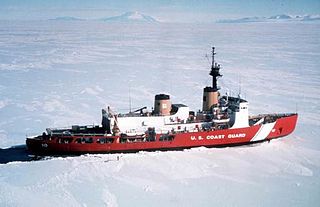
Polar-class icebreakersUSCGC Polar Star (WAGB-10), USCGC Polar Sea (WAGB-11) are heavy icebreakers operated by the United States Coast Guard (USCG). These cutters, specifically designed for icebreaking, have reinforced hulls, special icebreaking bows, and a system that allows rapid shifting of ballast to increase the effectiveness of their icebreaking. The vessels conduct Arctic and Antarctic research and are the primary icebreakers that clear the channel into McMurdo Station for supply ships. All are homeported in Seattle, Washington.

USCGC Mackinaw (WAGB-83) is a decommissioned United States Coast Guard icebreaker which operated on the Great Lakes for 62 years. A state-of-the-art icebreaker when she was launched in 1944, Mackinaw was built to extend the shipping season on the Great Lakes into the winter months and thereby strengthen the wartime economy of the United States during World War II. Unlike the U.S. Coast Guard's large icebreakers before and since, Mackinaw was designed specifically for use in the shallow, freshwater Great Lakes.

USS Edisto (AGB-2) was a Wind-class icebreaker in the service of the United States Navy and was later transferred to the United States Coast Guard as USCGC Edisto (WAGB-284). She was named after Edisto Island, South Carolina. The island is named after the Native American Edisto Band who inhabited the island and the surrounding area. As of 2011 there is a namesake cutter USCGC Edisto (WPB-1313). The newer Edisto is a 110-foot Island-class patrol boat and is stationed in San Diego County, California.
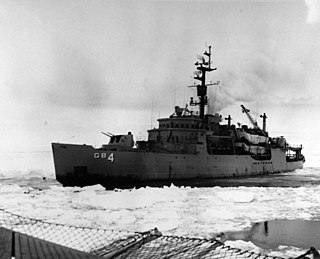
USS Glacier (AGB-4) was a U.S. Navy, then U.S. Coast Guard icebreaker which served in the first through fifteenth Operation Deep Freeze expeditions. Glacier was the first icebreaker to make her way through the frozen Bellingshausen Sea, and most of the topography in the area is named for her crew members. When built, Glacier had the largest capacity single armature DC motors ever installed on a ship. Glacier was capable of breaking ice up to 20 feet (6.1 m) thick, and of continuous breaking of 4-foot (1.2 m) thick ice at 3 knots.

USCGC Northwind (WAG/WAGB-282) was a Wind-class icebreaker, the second United States Coast Guard Cutter of her class to bear the name. She was built to replace USCGC Staten Island which was in Soviet lend-lease service.
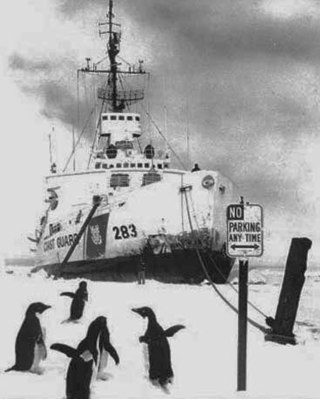
USS Burton Island (AG-88) was a United States Navy Wind-class icebreaker that was later recommissioned in the United States Coast Guard as the USCGC Burton Island (WAGB-283). She was named after an island near the coast of Delaware.

The Wind-class icebreakers were a line of diesel electric-powered icebreakers in service with the United States Navy, United States Coast Guard, Royal Canadian Navy, Canadian Coast Guard and Soviet Navy from 1944 through the late 1970s. They were very effective ships: all except Eastwind served at least thirty years, and Northwind served in the USCG continuously for forty-four years. Considered the most technologically advanced icebreakers in the world when first built, the Wind-class icebreakers were also heavily armed; the first operator of the class was the United States Coast Guard, which used the vessels for much-needed coastal patrol off Greenland during World War II. Three of the vessels of the class, Westwind, Southwind, and the first Northwind all went on to serve temporarily for the Soviet Union under the Lend-Lease program, while two others were built for the United States Navy and another was built for the Royal Canadian Navy; all eight vessels were eventually transferred to the United States Coast Guard and the Canadian Coast Guard.

USS Callao (IX-205), an unclassified miscellaneous vessel, was the third ship of the United States Navy to be named for Callao, a seaport in Peru. She was built for the Kriegsmarine as the weather ship and icebreaker Externsteine. The ship was captured on 16 October 1944 by USCGC Eastwind of the Greenland Patrol and was temporarily commissioned into the United States Coast Guard as USCGC East Breeze before being turned over to the United States Navy and commissioned as USS Callao in January 1945. The ship was sold out of service in 1950, and broken up the following year.

USCGC Westwind (WAGB-281) was a Wind-class icebreaker that served in the United States Coast Guard as USCGC Westwind (WAG-281), the Soviet Navy as the Severni Polius, and again in the U.S. Coast Guard as USCGC Westwind (WAGB-281).

USCGC Staten Island (WAGB-278) was a United States Coast Guard Wind-class icebreaker. Laid down on 9 June 1942 and launched on 28 December 1942, the ship was commissioned on 26 February 1944, and almost immediately afterward transferred to the Soviet Union, under the Lend Lease program, under the name Severny Veter, which loosely translates as Northwind, until 19 December 1951. When returned to the United States Navy, she was designated USS Northwind until 15 April 1952, when she was renamed Staten Island to distinguish her from her successor USCGC Northwind (WAGB-282) which had been laid down shortly after she was lent to the Soviet Union. The ship was transferred to the U.S. Coast Guard as USCGC Staten Island in February 1965, and served until November 1974, before being scrapped.

The USCGC Evergreen was a Cactus-class seagoing buoy tender operated by the United States Coast Guard. She served in the North Atlantic during World War II and participated in the International Ice Patrol in these waters after the war. She was the first dedicated oceanographic vessel in the Coast Guard's history. She was decommissioned in 1990 and sunk by the US Navy for target practice in 1992.

USCGC Elm (WLB-204) is a U.S. Coast Guard Juniper-class seagoing buoy tender home-ported in Astoria, Oregon. She is responsible for maintaining aids to navigation on the coasts of Oregon and Washington, including the Columbia River.

The Coast Guard Museum Northwest is dedicated to preserving the heritage of the United States Coast Guard in the Pacific Northwest. The museum is located on the property of Coast Guard Station Seattle on the Elliott Bay waterfront south of Downtown, Seattle, Washington. It covers the full range of Coast Guard roles, ranging from protecting shores, lives and property to lighthouses and lightships, from life-saving stations to rescue boats, from buoy tenders to icebreakers and weather ships and from modern aircraft to patrol boats and cutters. The museum admittance is free of charge.
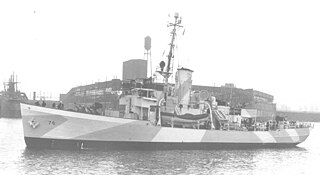
USCGC Comanche (WPG-76) was a United States Coast Guard cutter built by Pusey & Jones Corporation, Wilmington, Delaware, and launched 6 September 1934. She was commissioned on 1 December 1934. She was used extensively during World War II for convoy operations to Greenland and as a part of the Greenland Patrol.
Eastwind Ridge is a broad, partially ice-covered ridge about 10 nautical miles long between Chattahoochee Glacier and Towle Glacier in the Convoy Range of Antarctica.
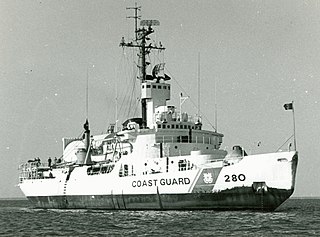
USCGC Southwind (WAGB-280) was a Wind-class icebreaker that served in the United States Coast Guard as USCGC Southwind (WAG-280), the Soviet Navy as the Admiral Makarov, the United States Navy as USS Atka (AGB-3) and again in the U.S. Coast Guard as USCGC Southwind (WAGB-280).

Charles Ward "Tommy" Thomas was a flag officer in the United States Coast Guard and commanding officer of the icebreakers USCGC Northland (WPG-49) and USCGC Eastwind (WAGB-279) that served in the Greenland Patrol during World War II. In August 1945 he was appointed commander of Greenland Patrol. After the war he was commanding officer of USCGC Northwind (WAGB-282) during Operation Highjump; The United States Navy Antarctic Developments Project 1946–1947, also known as the Fourth Byrd Antarctic Expedition. Later followed expeditions in the Bering Sea.

The Greenland Patrol was a United States Coast Guard operation during World War II. The patrol was formed to support the U.S. Army building aerodrome facilities in Greenland for ferrying aircraft to the British Isles, and to defend Greenland with special attention to preventing German operations in the northeast. Coast Guard cutters were assisted by aircraft and dog sled teams patrolling the Greenland coast for Axis military activities. The patrol escorted Allied shipping to and from Greenland, built navigation and communication facilities, and provided rescue and weather ship services in the area from 1941 through 1945.
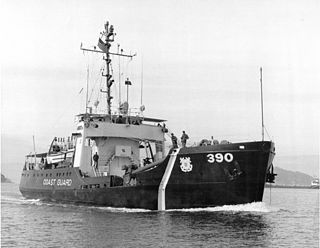
The USCGC Blackhaw (WLB-390) was a Iris-class buoy tender belonging to the United States Coast Guard launched on 18 June 1943 and commissioned on 17 February 1944.



















